I am powering a 5V microcontroller (arduino clone, atmega328p) using a 9V block and a buck converter.
Now I want to let the microcontroller occasionally measure the battery voltage, so I can get an idea of how full it is.
My first idea was to use a simple voltage divider:
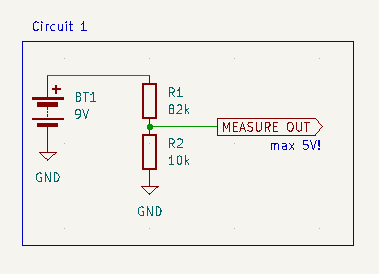
I've chosen the resistor values so that:
- the voltage at the measure output is
< 1.1V, to be able to use the 1.1V internal reference of the atmega's ADC
R1 || R2 < 10kΩ, since the atmega datasheet says "The ADC is optimized for analog signals with an output impedance of approximately 10 kΩ or less"
This is great and all, but what bothers me is that this circuit will constantly draw ~100µA from the battery.
So, my next thought was to add a mosfet to the divider, to switch it on only while measuring:
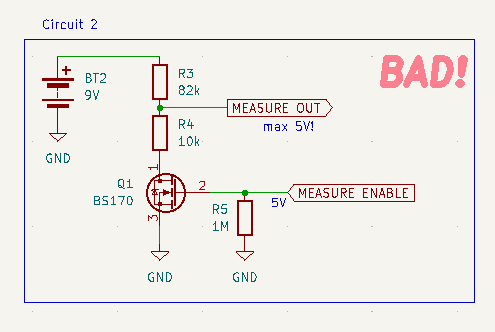
This is obviously bad, because now when the mosfet is off, the ADC input sees the whole battery voltage.
To address that issue, I've added a second mosfet into the measure path:
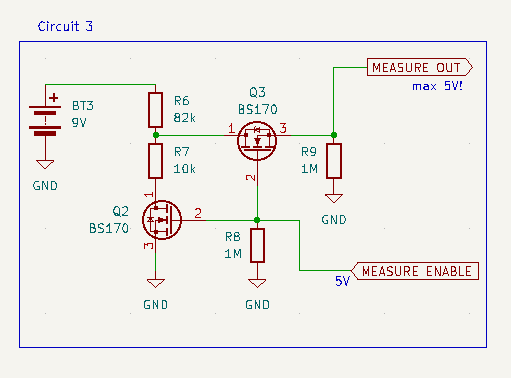
This works, and it does not draw any current, except while measuring.
However, it's quite a few parts.
So I'm curious if anyone has an idea how to do this with just a single mosfet.
It seems to me like it should be possible, but I haven't figured out how.
Oh, and if I'm doing something stupid here, please tell me :)
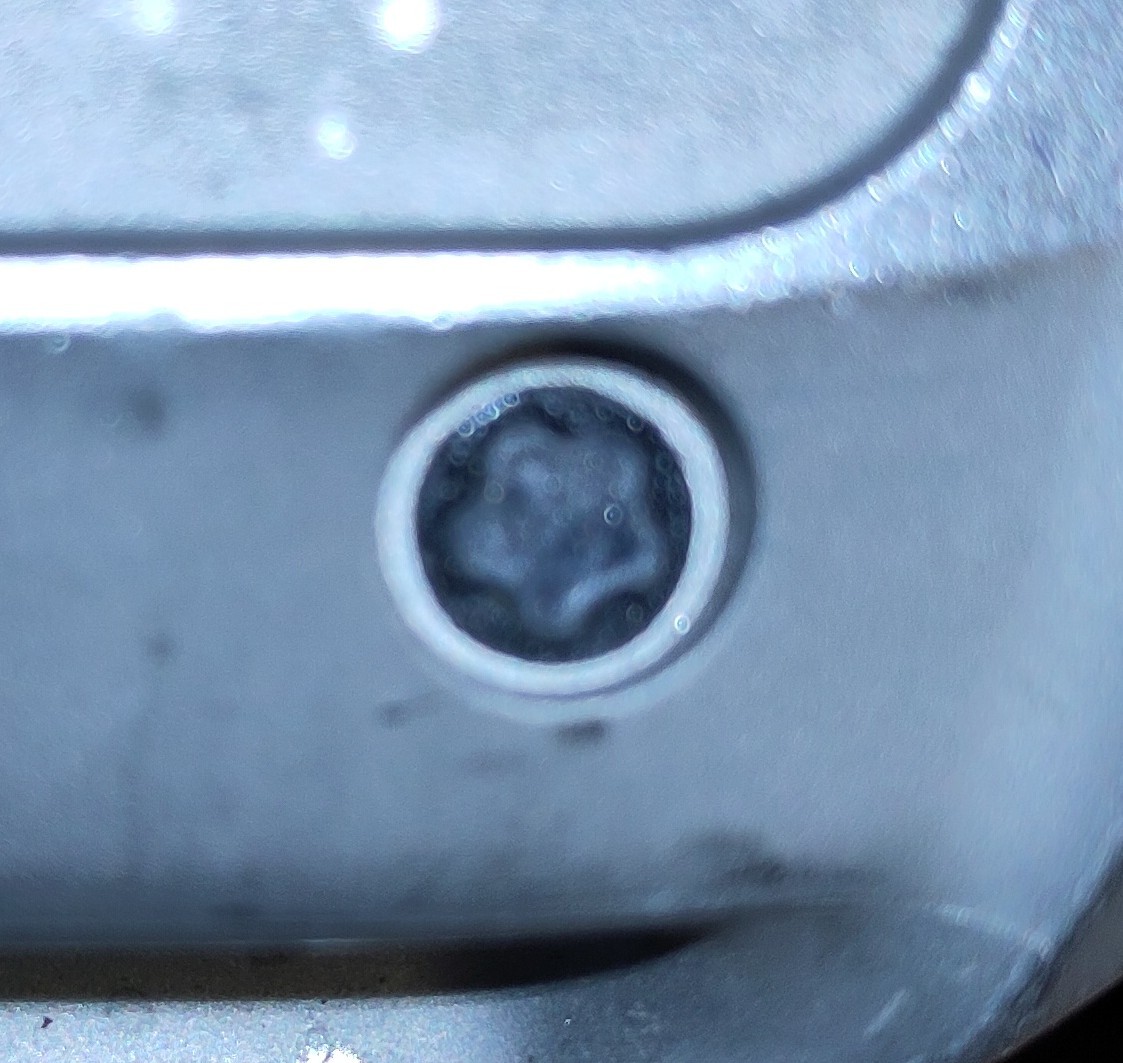





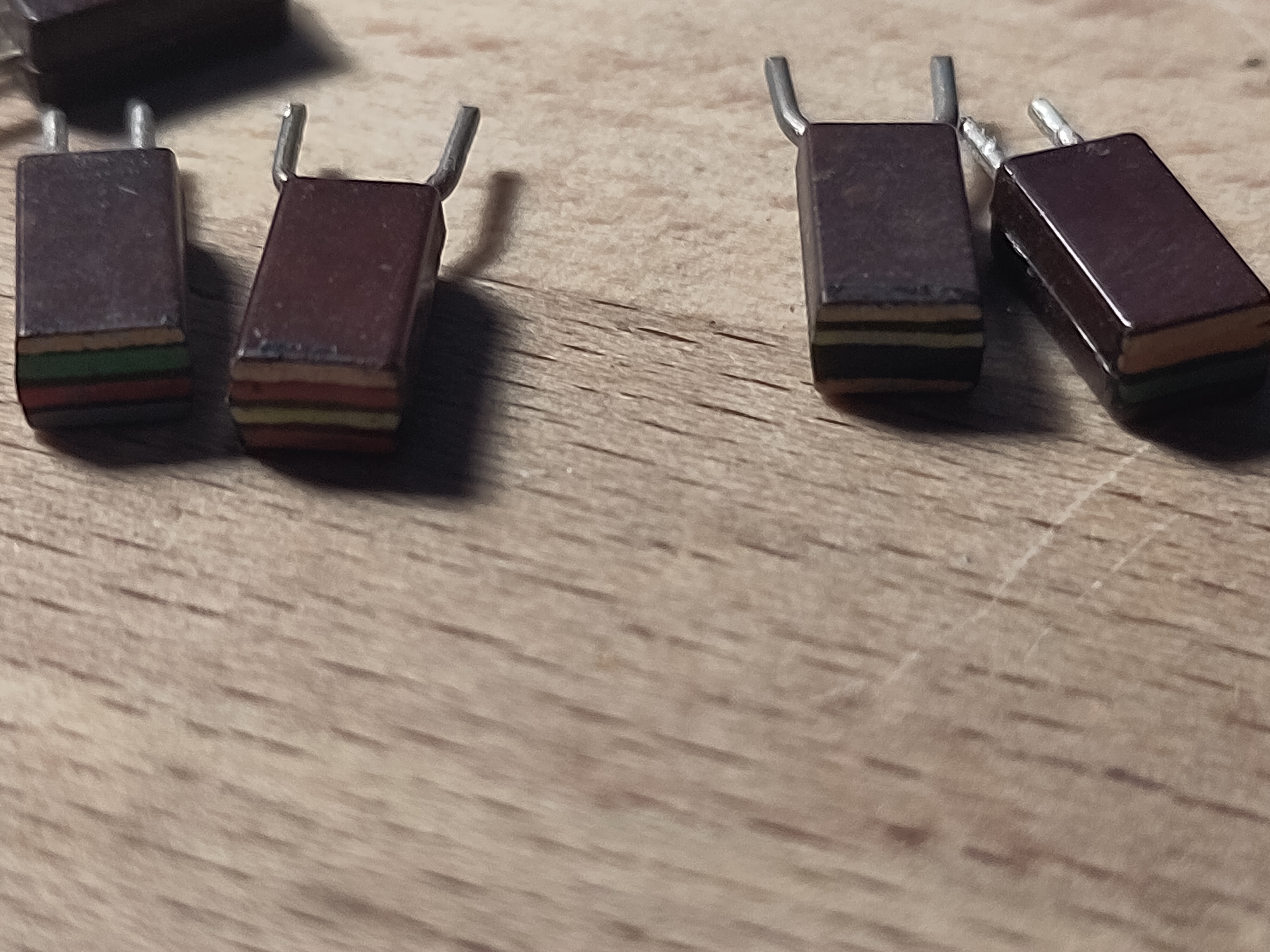
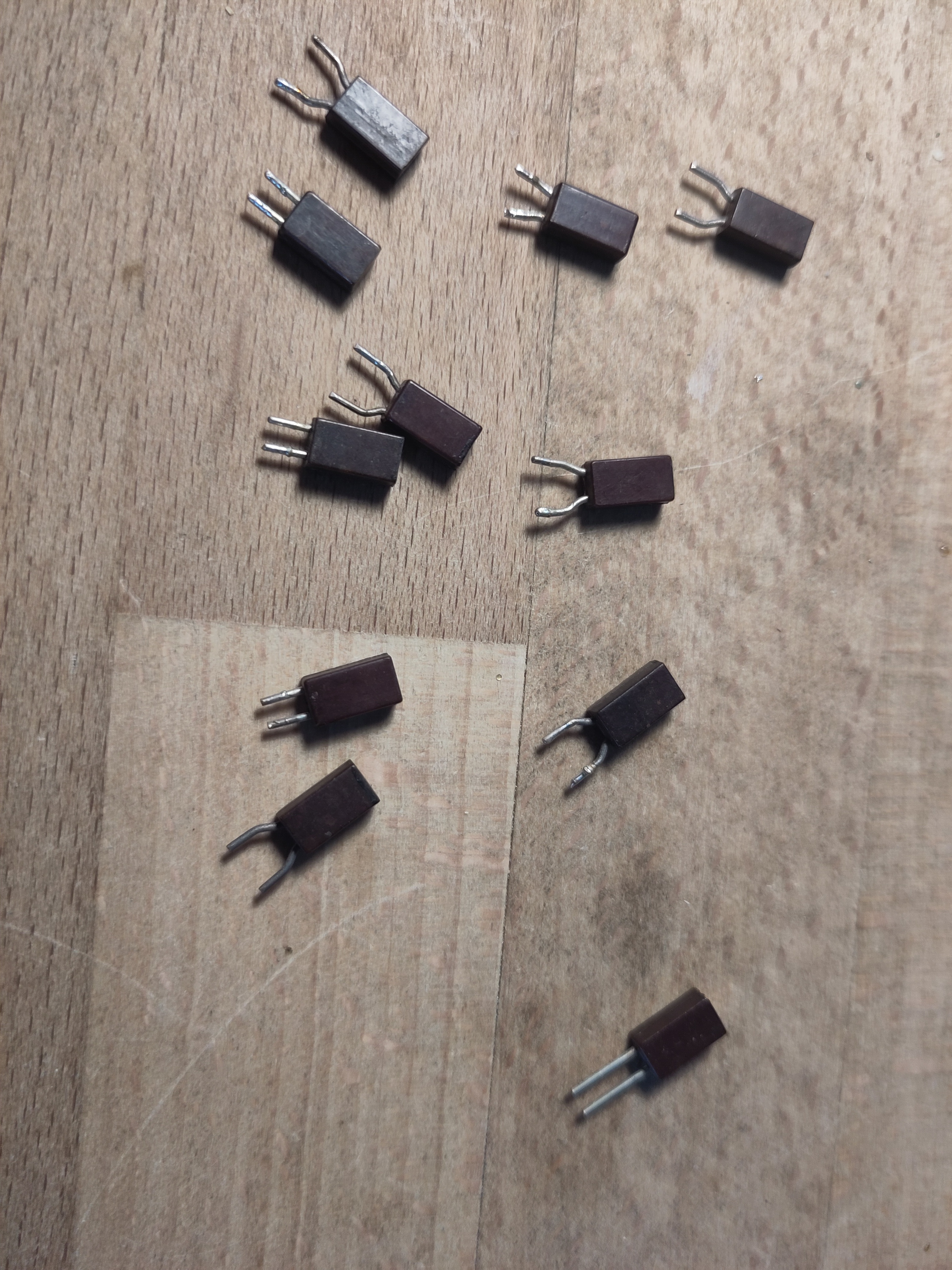

Great, good luck with that :)
Another thing that comes to mind: for audio purposes another technique used in ring modulators for audio effects is to use a mosfet switch to mix the signal with a square wave. This has more byproducts than mixing with a pure sine, but is a lot easier to do. Since you are downconcerting, it should not matter at all if you use a square wave, since the byproducts will all be (higher-order) harmonics of the local oscillator, which you'll filter out anyway.